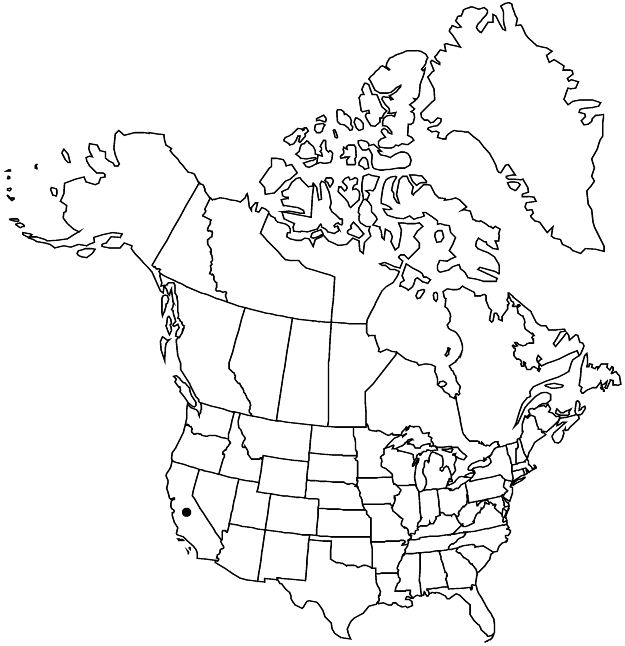Sidalcea sparsifolia
Madroño 56: 107. 2009.
Herbs, perennial, 0.2–0.8 m, not glaucous, with thick, fibrous caudex or taproot and short rootstocks, rhizomes developed or not, 3–5 mm diam. Stems 1–20, clustered, erect to ascending or decumbent, usually not rooting, solid, proximally hairy, hairs simple, stellate, or mixed, 0.5–1.5 mm, distally usually stellate-hairy or glabrous. Leaves mostly basal, cauline to 5, (plant sometimes scapose); stipules linear to lanceolate, 2–8 × 1–1.5 mm; petioles of basal leaves 5–10(–25) cm, often 5 times blade length, distally reduced to 1/2 times blade length; blade orbiculate to reniform, 2–6(–8) × 2–6(–8) cm, base cordate, apex rounded, surfaces stellate-hairy abaxially, moderately minutely stellate-hairy to appressed-hairy adaxially, basal leaves usually shallowly 7-lobed, sometimes unlobed and margins crenate, cauline smaller, palmately 3–5-lobed ± to base, lobe margins entire or incised. Inflorescences usually ascending, ± open, calyces not conspicuously overlapping except sometimes in bud, branched or unbranched, 10+-flowered, most flowers spaced 1+ cm apart, elongated, extending well above leaves, narrow, often 1-sided, (15–)30–45 cm; bracts lanceolate, mostly 2-fid, proximal bracts divided ± to base, distal sometimes undivided. Pedicels 2–8(–15) mm; involucellar bractlets absent. Flowers bisexual or unisexual and pistillate, plants gynodioecious; calyx 6–10 mm, densely to sparsely stellate-puberulent, hairs usually longer, coarser, 2–4-rayed especially at margins and over veins; petals pinkish rose to pinkish lavender or magenta, pale-veined or not, base often white, 10–25 mm, pistillate darker, 6–15 mm, bisexual 12–25(–30) mm; staminal column 5–6 mm, puberulent; anthers white; stigmas (6 or)7–9. Schizocarps 5–6 mm diam.; mericarps (6 or)7–9, 2.5–3 mm, roughened, glandular-puberulent, lightly to moderately reticulate-veined, pitted, mucro 0.5–1 mm. Seeds 2.5 mm. 2n = 20, 40.
Phenology: Flowering Mar–Jun(–Sep).
Habitat: Moist, often grassy, open places, often on mesas, chaparral, pine-oak openings
Elevation: 10–2200 m
Distribution

Calif., Mexico (Baja California).
Discussion
Sidalcea sparsifolia intergrades with S. malviflora subsp. californica and S. neomexicana. None of the varieties described within S. malviflora subsp. sparsifolia is recognized here but one or more of them may merit distinction. Along with S. neomexicana, S. sparsifolia is one of the southern species of Sidalcea and one of the more tolerant of hot, dry, desert conditions.
Sidalcea sparsifolia is the most common of the southern California species, occurring in the Sierra Nevada foothills and South Coast Ranges. It has been confused with S. neomexicana and with subspecies of S. malviflora. It can be distinguished from the former by its nonpustulate hairs, fibrous crown, and nonfleshy roots, and from the latter by its inland habitat, larger, ascending inflorescences, and tendency to have mostly basal leaves.
Selected References
None.